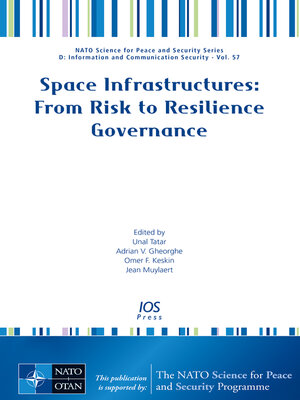Space Infrastructures
ebook ∣ From Risk to Resilience Governance · NATO Science for Peace and Security Series--D: Information and Communication Security
By Unal Tatar

Sign up to save your library
With an OverDrive account, you can save your favorite libraries for at-a-glance information about availability. Find out more about OverDrive accounts.
Find this title in Libby, the library reading app by OverDrive.



Search for a digital library with this title
Title found at these libraries:
| Library Name | Distance |
|---|---|
| Loading... |
Space-critical infrastructures represent an interdependent system of systems consisting of workforce, environment, facilities, and multidirectional interactions. These are essential for the maintenance of vital societal functions such as health, safety, security, mobility, and the economic and social well-being of people, and their destruction or disruption would have a significant impact on society as a whole. In all, 79 nations and government consortia currently operate satellites, with 11 countries operating 22 launch sites. Despite creating new challenges, this multi-actor environment offers opportunities for international cooperation, but making the most of these opportunities requires a holistic approach to space-critical infrastructure, away from strictly defined space technologies and towards understanding the resilience of complex systems and how they are intertwined in reality.
This book presents papers from the NATO Advanced Research Workshop (ARW), entitled Critical Space Infrastructure: From Vulnerabilities and Threats to Resilience, held in Norfolk, Virginia, USA from 21-22 May 2019. The ARW brought together representatives from academia, industry, and international organizations in an effort to deepen scientific and technological understanding of space-critical infrastructures and explore the implications for national and international space security and resilience. It examined space as a critical infrastructure from a multidisciplinary perspective in accordance with NATO's Strategic Concept.
The 29 chapters in the book are divided into six sections covering space infrastructure: governance; cybersecurity; risk, resiliency and complexity; emerging technologies such as block chain, artificial intelligence and quantum computing; application domains; and national approaches and applications.







